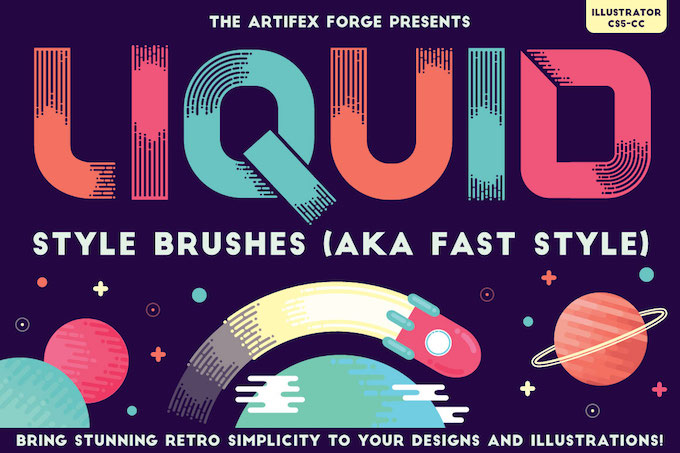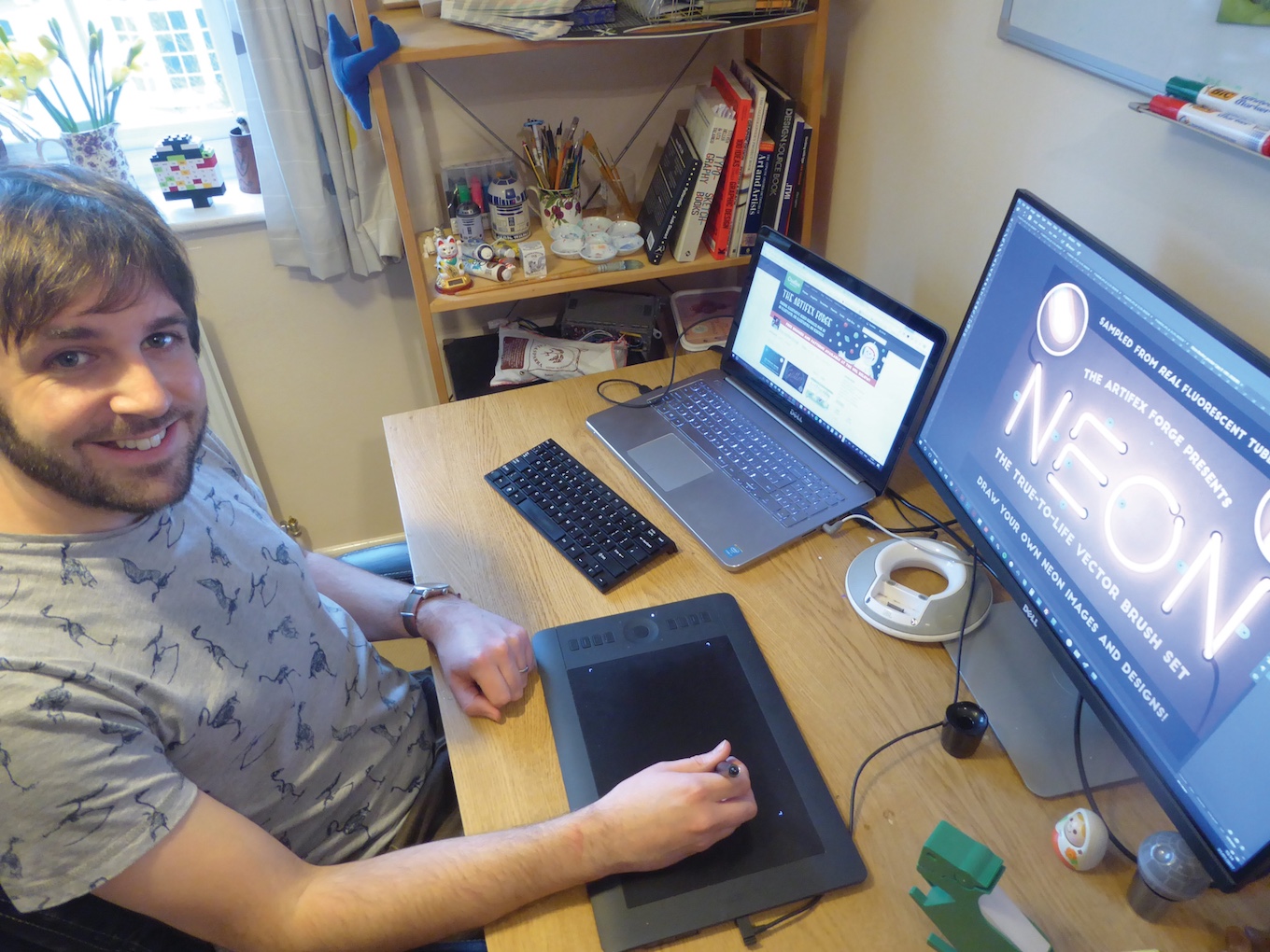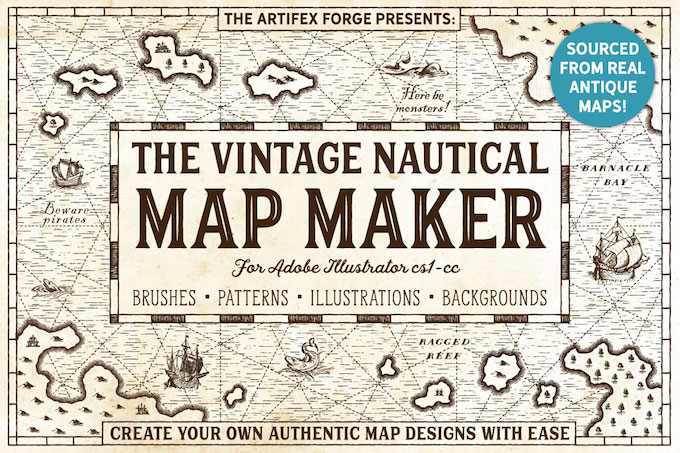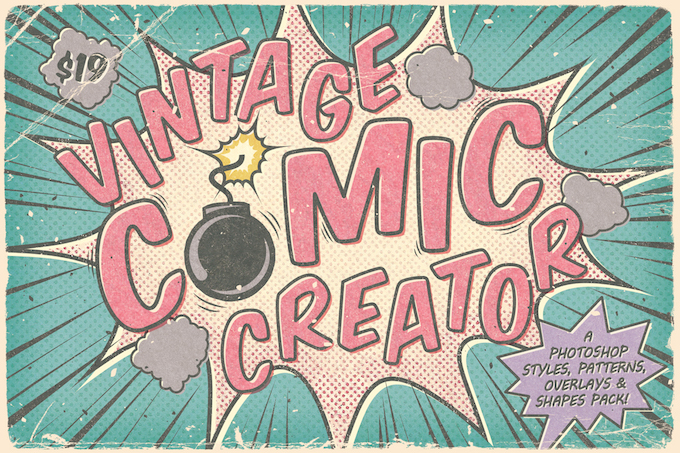We often look up to, admire and even a little bit envy those, who once was fortunate enough to be taught the things we discover by fits and starts, listening at the keyhole and peeping from behind others’ backs.
You – a professional graphic designer, illustrator, animator – you're the one, we, course-listeners have always wanted to be: feel confident about the skills, training and finally which way and which obstacles to take. Just remember your infinite power at your fingertips.
What's it all about? Today's story is about such a lucky devil Jeremy Child and his well-known brand The Artifex Forge. With a brilliant academic background, he's managed to place modern tendencies of graphic design under the command and resist the routine of remote work – the worst enemy of creative aspirations and outbursts. How? Let him tell ya!

Please tell us a little bit about yourself. Who are you? Why have you decided to start your way of a designer?
I originally trained as an illustrator in Bristol, UK before moving through design roles at a greetings card company to a novelty children’s book publisher. Here I started developing my design skills along with doing a lot of paper engineering and concept work. I love creating new and different ideas as well as working with my hands so, while my desk was a tip, it was great fun!
Three years ago my wife started on a three-year research project investigating Fairtrade wine, which involved a lot of foreign travel. It has given me the perfect opportunity to leave my design job and go freelance, which has made me a lot more portable!

Novelty children’s book illustration by Jeremy Child
What are the ups and downs of being a designer?
The best part of being a designer who makes their living from selling stock graphics rather than relying on client work is the freedom - I can largely do what I want, when I want and create the designs and illustrations that I like, which suits me far better than following someone else’s brief. However, this can be both positive and negative - while it is easy to take time off to do life admin or go on holiday. The travels took us to South Africa, Chile, Argentina, Brazil, Germany, Finland, Sweden and the US – what a sacrifice! Being able to sell online through sites such as Creative Market enables me to continue working and earning while we travel, which is fantastic.
However, working home can also be massively frustrating as it can really disrupt workflow – for example, I now seem to be the post office depot for all the undelivered parcels on my street as I’m always in! Also, the DIY jobs around our new house keep looking reproachfully at me…

Where do you get your inspiration?
I don’t consciously go looking for inspiration – it just seems to pop up everywhere. I make sure I regularly walk around and engage with the local environment, look at non-design books, watch adverts, look in magazines and at billboards, go to art galleries and historical sites… this gives the best chance of thinking of something original and really getting into what people around me are actually into right now.
Inspiration can come from some unexpected places - my most recent product – Fine Liner Brushes and Patterns popped into my head when I was clearing out old school and college exercise books, which I’d doodled all over when I should have been doing school work.
I also keep my eye on websites such as Dribbble and Instagram – there are loads of amazing artists on there, and it can be a great way of triggering an idea or discovering an unusual art style. For example, my Liquid Style Brushes and Font came about because I kept seeing amazing liquid style art everywhere and wanted to give people the chance to get this look into their work.

Liquid Style Brushes by Jeremy Child
Tell us about your working day. What does your creative process look like?
Working from home means that I’m in danger of missing out on the exercise that most people get with their daily commute. So, I start the day by walking halfway to my wife’s work and back. It also helps me gear up for work mode and separate home and work life.
When I ‘get to work’ the process can be quite varied because of the variety of products that I create. If I’m working on gathering source material I could be trying out a new art style, photographing tiny pieces of glitter, scouring old books and the internet for vintage source material, trawling bars trying to find good examples of neon tubing or wandering back streets looking for useful examples of graffiti.
Working from home means that I’ve been able to create a quiet, calm environment, so I work in a room at the top of my house, which is tucked away from distractions. At the end of the day, my wife often has to remind me to stop as I seem to be most productive in the early evening and always want to do just one more thing. ?

If you had to choose which of your artworks you’d call your number 1, what would it be and why?
The Vintage Nautical Map Maker is my most successful product. Although I only released it recently it’s been a huge seller – achieving number one on the Creative Market sales rankings – something I’m really pleased about. The project had been on my list for years, but I waited until I found the right source material to do the idea justice and make it look authentic.

The Vintage Nautical Map Maker by Jeremy Child
In terms of a long-term success, I’m really proud of my Vintage Comic Creator – it’s consistently been an extremely popular product over the two years since it was released and it was such a great fun to make.

Vintage Comic Creator by Jeremy Child
What would you advise to the young designers, who're just dreaming about conquering Creative Market and other marketplaces?
Find your niche – I started out trying my hand at making a range of digital products – patterns, brushes, layer styles, illustrations and more but it became clear quite quickly that I enjoyed creating Adobe Illustrator brushes most and, luckily, these seemed to sell the best too. I like the range of different media and styles that I get to use in the process – it keeps making stock interesting.
Take your time – don’t rush products. In the early days I was a little too eager to get products out there, and consequently, the presentation wasn’t as good as it could have been. Now I don’t set deadlines; I just work until I’m happy with the result.
Make sure you give good customer service – I often give advice that extends beyond the product remit as a lot of my buyers are beginners. I think this results in many of them getting more out of the software that they bought the product for and many become repeat buyers.
Before you quit your day job (if you have one), get yourself established with a base level of income that you can survive on so that you can make the most of the opportunities when they appear!
Keep a good work-life balance — it’s important to take breaks so that you don’t burn out and stifle your creativity. The temptation is there to work all hours, but that’s rarely the most productive way to do things.
Epilogue
High standards are the most powerful motivation that should make your day start earlier than ever. Your work passionately and patiently on the things you can hardly work out and stick not to deadlines but an unbeatable combination of perfection and performance.
Well, guess, Jeremy is your best high standard, isn't he?
So, what are you waiting for sitting agape and reading this longish sentence? Set your goals, be unstoppable, craft the things better than you used to yesterday and let the Pixelbuddha be in you, bro!

